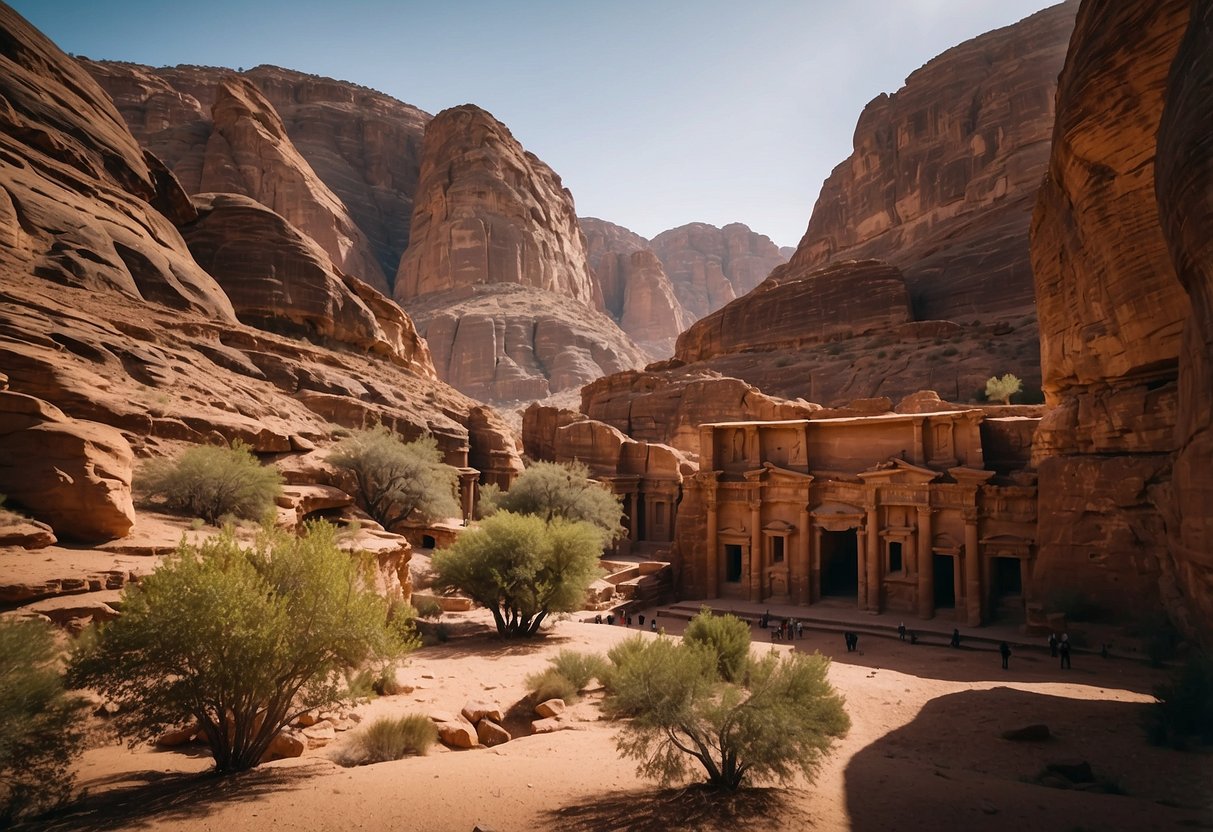
Relaxing at the Dead Sea
The Dead Sea, located a few hours from Petra, is famous for its hyper-saline waters and mineral-rich mud. Bathing in its waters allows for an effortlessly buoyant experience, where floating on the surface becomes an unusual delight. The mud is reputed to have therapeutic benefits, making it popular for spa treatments.
A variety of accommodations can be found along the shores, from luxury resorts to more modest lodgings. Day trips here also provide opportunities to visit nearby Bethany Beyond the Jordan, the biblical site believed to be where Jesus was baptized. Adding this stop can enrich the historical resonance of the journey.
At the Dead Sea, relaxation is key, with many visitors spending their time lounging along the shore or enjoying the wellness facilities that numerous resorts offer.
Accommodation Options
Visitors to Petra can choose from a range of accommodations, from hotels in the nearby town of Wadi Musa to traditional Bedouin camps in the desert, each offering unique experiences and amenities.
Hotels in Wadi Musa
Located just a few kilometers from Petra, Wadi Musa offers a variety of hotels to suit different budgets and preferences. Visitors can find luxury hotels with amenities like spas, pools, and restaurants, providing a comfortable and convenient stay.
Mid-range hotels in Wadi Musa often provide clean rooms, friendly service, and sometimes stunning views of the surrounding landscape. Budget travelers can find guesthouses and hostels that offer basic accommodations at affordable rates. The proximity to Petra makes it easy for guests to access the ancient city early in the morning or return late in the evening.
Staying in Bedouin Camps
For a more immersive experience, tourists can opt to stay in traditional Bedouin camps located in the desert surrounding Petra. These camps offer a unique opportunity to experience Bedouin hospitality and culture. Accommodations typically include tents equipped with beds and basic facilities.
Camp stays often include authentic Bedouin meals, cooked over an open fire, and opportunities to partake in traditional music and storytelling sessions. Many camps also offer desert tours and camel rides, allowing guests to explore the stunning landscape around Petra. Staying in a Bedouin camp offers a memorable alternative to traditional hotel accommodations and a chance to connect with the history and culture of the region.
Understanding Petra’s Heritage
Petra is recognized both for its historical significance and natural features. Its heritage has been shaped by the Nabateans and its unique geological formations.
Nabatean History
Petra was established as the capital of the Nabatean Kingdom around the 4th century BC. The Nabateans, originally nomadic Arabs, advanced in trade and agriculture. They controlled critical trade routes and developed irrigation systems, making Petra a major trade hub. Their ingenuity is visible all over Petra, notably in its rock-cut architecture and water management systems. The city’s wealth attracted attention, leading to its eventual incorporation into the Roman Empire in AD 106.
Petra’s Geology and Preservation
Petra’s structures are predominantly carved from sandstone, a soft and easily eroded rock. This makes preservation challenging, especially with exposure to wind and rain. Significant earthquakes have also impacted the city’s architecture over centuries, including a major quake in 363 AD that caused extensive damage. The importance of Petra’s preservation is underscored by its addition to the UNESCO World Heritage list in 1985, recognizing its cultural and natural significance. Efforts continue to protect this ancient jewel from natural decay and human impact.